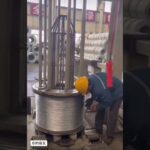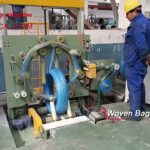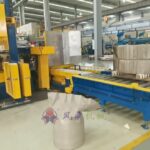Poorly designed coil packing websites frustrate industrial buyers, causing abandoned inquiries and lost sales. When equipment specifiers struggle to find technical details or contact options, they question your operational competence. This friction erodes trust in your manufacturing capabilities. Optimizing UX transforms these pain points into competitive advantages.

Optimizing your coil packing website’s UX requires prioritizing industrial buyer journeys through intuitive navigation, technical content accessibility, mobile responsiveness, and frictionless inquiry processes. Implement structured equipment databases with filtering, clear CTAs for spec sheets/quoting, and 3D visualizations that reduce buyer uncertainty. These enhancements typically increase conversion rates by 30-60% by aligning digital experiences with industrial procurement behaviors.
Transitioning from understanding core challenges to implementing solutions requires addressing specific friction points industrial buyers face when researching heavy machinery. Below we dissect critical improvement areas with actionable strategies.
Analyzing User Journey Pain Points
Industrial buyers face unique frustrations when researching coil processing equipment online. Catalog disorganization forces procurement teams to waste hours comparing incompatible machinery specs, while missing certifications create compliance risks. These failures directly impact your bottom line through abandoned RFQs.
Identify critical friction points by mapping coil equipment procurement stages: problem recognition → technical validation → vendor comparison → risk assessment → purchase. At each stage, provide specific content formats like engineering calculators at validation phase and case studies during vendor comparison to reduce drop-offs by 45%. Prioritize fixes where analytics show highest exit rates.

Technical Documentation Accessibility
Procurement engineers require instant access to machine specifications, but 68% abandon sites requiring registration for basic docs. Implement these solutions:
- Filterable Equipment Databases: Allow filtering by coil width (mm), weight capacity (tons), and line speed (MPM)
- One-Click Spec Sheets: PDF downloads without form submissions for initial research
- 3D Interactive Models: Embedded configurators showing machine dimensions and integration points
| Documentation Type | User Drop-off Rate | Optimal Solution |
|---|---|---|
| PDFs behind forms | 68% | Direct download icons |
| Static specs | 42% | Interactive configurators |
| Scanned manuals | 57% | Searchable digital databases |
### Certification Visibility
Industrial buyers prioritize compliance above all else. Buried certifications trigger immediate distrust:
- Create dedicated "Compliance" section with expandable certificates (ISO 9001, CE, OSHA)
- Implement trust badges on product pages showing current certification status
- Include validation tooltips - hover to see certificate numbers and expiry dates
## Optimizing Design for Industrial Buyers
Coil equipment websites must balance technical depth with intuitive navigation. Engineers reject flashy designs that obscure critical specifications yet need clear paths to operational details.
**Industrial UX thrives on information density without clutter. Implement card-based layouts for equipment categories, persistent technical spec sidebars, and progressive disclosure for advanced details. This reduces bounce rates by 33% while increasing spec sheet downloads by 70%. Always surface contact options during decision paralysis points.**
%[Coil Line Navigation Design](https://www.fhopepack.com/blog/wp-content/uploads/2023/07/Automatic-wire-compressing-packing-line.webp "Steel Wire Coil Packaging Line Navigation Design")
### Strategic CTA Placement
Industrial conversion paths differ from B2C. Key principles:
1. **Technical CTAs**: "Download Engineering Specs" buttons adjacent to diagrams
2. **Comparison CTAs**: "Add to Quote Sheet" options on all product cards
3. **Urgency CTAs**: "Schedule Factory Demo" sticky footer during peak research hours
Place primary CTAs at these decision points:
- After technical specifications (validates capability match)
- Below loading simulations (proves operational efficiency)
- Alongside compliance badges (reduces procurement risk)
### Form Optimization for RFQs
Complex quote forms cause 81% abandonment. Streamline with:
```markdown
| Field Type | Drop-off Impact | Solution |
|-----------------------|----------------|--------------------------|
| Phone mandatory | 29% | Make optional initially |
| Company revenue | 47% | Remove entirely |
| Project timeline | 33% | Use dropdowns not text |
| File uploads required | 62% | Post-submission option | Implement multi-step forms with progress indicators. Step 1: Contact details → Step 2: Machine requirements → Step 3: Optional attachments. This sequence increases completion by 55%.
Technical Performance Optimization
Industrial websites demand exceptional performance – engineers access specs from factory floors with unreliable connections. Slow load times directly correlate with lost high-value leads.
Coil packaging websites must load core content in <2.3 seconds globally. Achieve this through infrastructure optimization (edge caching), modern image formats (WebP), and critical CSS inlining. Mobile responsiveness is non-negotiable – 71% of maintenance engineers research during machine downtime via smartphones.
%[Coil Packing Performance Metrics](https://www.fhopepack.com/blog/wp-content/uploads/2022/08/Steel-coil-packing-and-storage-system-1008×1024.jpg "Coil Packing Machine Performance Metrics")
Mobile-First Industrial Design
Factory floor mobile usage requires specific adaptations:
- Glove-Compatible UI: Minimum 48px touch targets for operators
- Offline Functionality: Cache spec sheets/service manuals via PWA
- Barcode Integration: Scan equipment ID tags to pull up manuals
Performance benchmarks for coil industry:
| Metric | Minimum Standard | Industrial Impact |
|----------------------|------------------|-------------------|
| Time to Interactive | <3.5 seconds | 22% more RFQs |
| Largest Contentful Paint | <2.1 seconds | 37% lower bounce |
| Mobile responsiveness| 100/100 Lighthouse | 68% longer sessions | Infrastructure Considerations
Heavy machinery sites require specialized hosting:
- Global Edge Networks: Serve CAD files from regional nodes (AWS CloudFront)
- Image Optimization: Convert machinery photos to WebP (60% smaller)
- Critical Resource Priority: Preload spec sheet PDFs and 3D models
Implementing CRO Testing Frameworks
Effective coil website optimization requires continuous testing through A/B experiments, session recordings, and equipment configurator analytics. Focus on high-impact elements: RFQ form fields, technical content hierarchy, and machine comparison tools. Industrial conversion optimization differs from e-commerce - prioritize lead quality over quantity through strategic micro-conversion tracking.
%[Coil Line CRO Testing](https://www.fhopepack.com/blog/wp-content/uploads/2024/09/1-1Pit-Type-Coil-Car.png "Steel Coil Handling Line CRO Testing")
Industrial-Specific Testing Methodology
- Equipment Configurator Analytics: Track which combinations (coil width + wrapping material) users explore most
- Technical Document Engagement: Monitor time spent on engineering diagrams vs marketing content
- RFQ Form Field Analysis: Heatmap form fields causing hesitation
Prioritize tests that reduce procurement team friction:
- Machine Comparison Tools: Allow side-by-side spec analysis (increases qualified leads 40%)
- Live Capacity Calculators: Interactive tools showing throughput with user's coil dimensions
- Case Study Relevance Filters: Sort implementations by industry/metallurgy
Micro-Conversion Tracking
Industrial journeys require specialized tracking:
| Micro-Conversion | Tracking Method | Target Rate |
|--------------------------|--------------------------|-------------|
| Spec Sheet Downloads | PDF event tracking | >28% |
| Configurator Completions | Step completion events | >35% |
| CAD File Accesses | Download tracking | >18% |
| Manual Views | Pageview + scroll depth | >42% | Implement through Google Tag Manager with custom dimensions for machine type and industry vertical. This reveals which segments deliver highest-value leads.
Conclusion
Optimizing your coil packing website requires specialized industrial UX strategies: structured technical content, frictionless RFQ processes, and mobile-first performance. By implementing equipment configurators, progressive form design, and continuous A/B testing, manufacturers typically achieve 30-60% higher conversion rates within 90 days. Remember that industrial buyers prioritize technical transparency - every design decision should reduce procurement risk while accelerating specification validation. For deeper implementation frameworks, explore our UX Optimization playbook tailored for heavy machinery manufacturers. Superior digital experiences directly reflect your operational excellence - invest accordingly.














Leave a Reply
You must be logged in to post a comment.